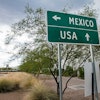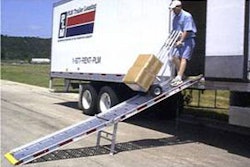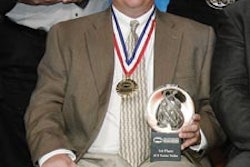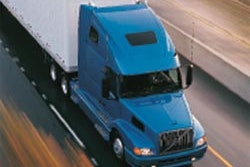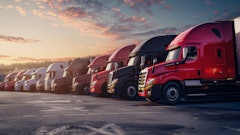You've had quite a varied career at Costco Wholesale Corp. since joining the company in 1984. How did you come to your present position?
Mogk: The short story is that I was hired as a part-time vault clerk in West Palm Beach, FL, in 1984. Six months later I was promoted to administrative assistant for Tom Walker, who was then the vice president of operations for the Southeast. Today, he is still my boss, but he is now our executive vice president of distribution and construction.
After three years, I went back into the warehouse as a staff manager and was promoted to assistant warehouse manager. In 1991, I was transferred to the Northwest in that capacity until joining the Purchasing Department as an equipment buyer in 1994.
In 1998, I joined the depot system as the assistant depot manager in West Palm Beach. In 2000, I was promoted to depot manager of our Tolleson, AZ, depot, where I worked for two years. In 2002, I transferred to our largest depot in Mira Loma, CA, as the depot manager. In 2004, I was promoted to assistant vice president of depots and transferred back to the Northwest and the corporate office in Issaquah, WA.
Costco has seen some huge growth during that time, and is now one of the nation's leading warehouse club store chains in the country, with 477 warehouses generating more than $52 billion in sales last year. How do suppliers get products to your locations, and what kind of distribution center operations does Costco need to support them? What role does the distribution center play under the warehouse store model?
Mogk: Our warehouses rely on just-in-time deliveries. The vast majority of Costco merchandise is shipped through our depot system, which is largely a cross-docking operation.
For our suppliers, using our depot system is not required, however. A net landed cost analysis is performed and the depot is used only if it is the least expensive method of moving the freight into our stores.
How does Costco determine where to place its stores, and position its distribution centers in relation to its unique store concept?
Mogk: Costco operates 477 warehouses around the world, including 350 in the United States and Puerto Rico, 68 in Canada, 17 in the United Kingdom, five in Korea, four in Taiwan, five in Japan and 28 in Mexico, and plans to open an additional 11 to 12 new warehouses this year. Depot placement is determined and driven by freight costs.
How much of the transportation within Costco's operations are done in-house and how much is done by third-party logistics providers or contracted carriers?
Mogk: Costco does not use 3PL's. Six company fleets with 290 leased trucks and 1,400 trailers serve 183 warehouse locations within a 100-mile radius of the depots.
In 2006, Costco's fleets will log 29 million miles and deliver 245,000 loads. Five of the six Costco fleets operate Kenworth T800 trucks. When our drivers got into those Kenworths, they were really happy with the extra room and great visibility.
I understand the majority of Costco's truck fleet is leased. Why did the company decide to go with leasing? One would think that with an operation the size of Costco's, the company would be better off owning its own fleet of trucks?
Mogk: As a just-in-time delivery company, dependability of equipment is critical. Leasing our equipment allows us to have and to rely on a fixed cost for our transportation. Additionally, the full-service lease allows us to simply focus on delivering our warehouse loads while others take care of 100 percent of the maintenance and ensure our equipment is in top-working condition at all times so that we can make those just-in-time deliveries.
Since starting its leasing agreement with PacLease two years ago, I understand that Costco has improved its fuel economy by 3.5 percent and boosted driver satisfaction substantially. How did you accomplish this?
Mogk: PacLease came in with a very good bid process. They did what they needed to do to understand our business and needs. Fuel mileage was a major consideration and they did a great job spec'ing the right trucks for us.
We actually went through a line-by-line spec review process with PacLease, Kenworth and Costco fleet managers and fleet drivers. PacLease and Kenworth went through each spec, and explained every nuance to our fleet managers.
We looked at each fleet's individual topography, climate, payload, etc. to ensure we were spec'ing the right truck for them. For example, we ended up with different engines in California and. Florida. Costco fleet managers in California worked with PacLease and Kenworth to fit T800s with Caterpillar C15 435 horsepower engines, Eaton transmissions and Spicer axles. Florida, being virtually flat, did not need the horsepower of the trucks traveling in California.
Also, in asking ourselves what the overall "right" spec was, we looked into the use of the super single wide tire, which we are now using on both the tractors and trailers. Since the tires create less drag, we are increasing our fuel efficiency with the use ofthis tire as well. — Leonard Klie
